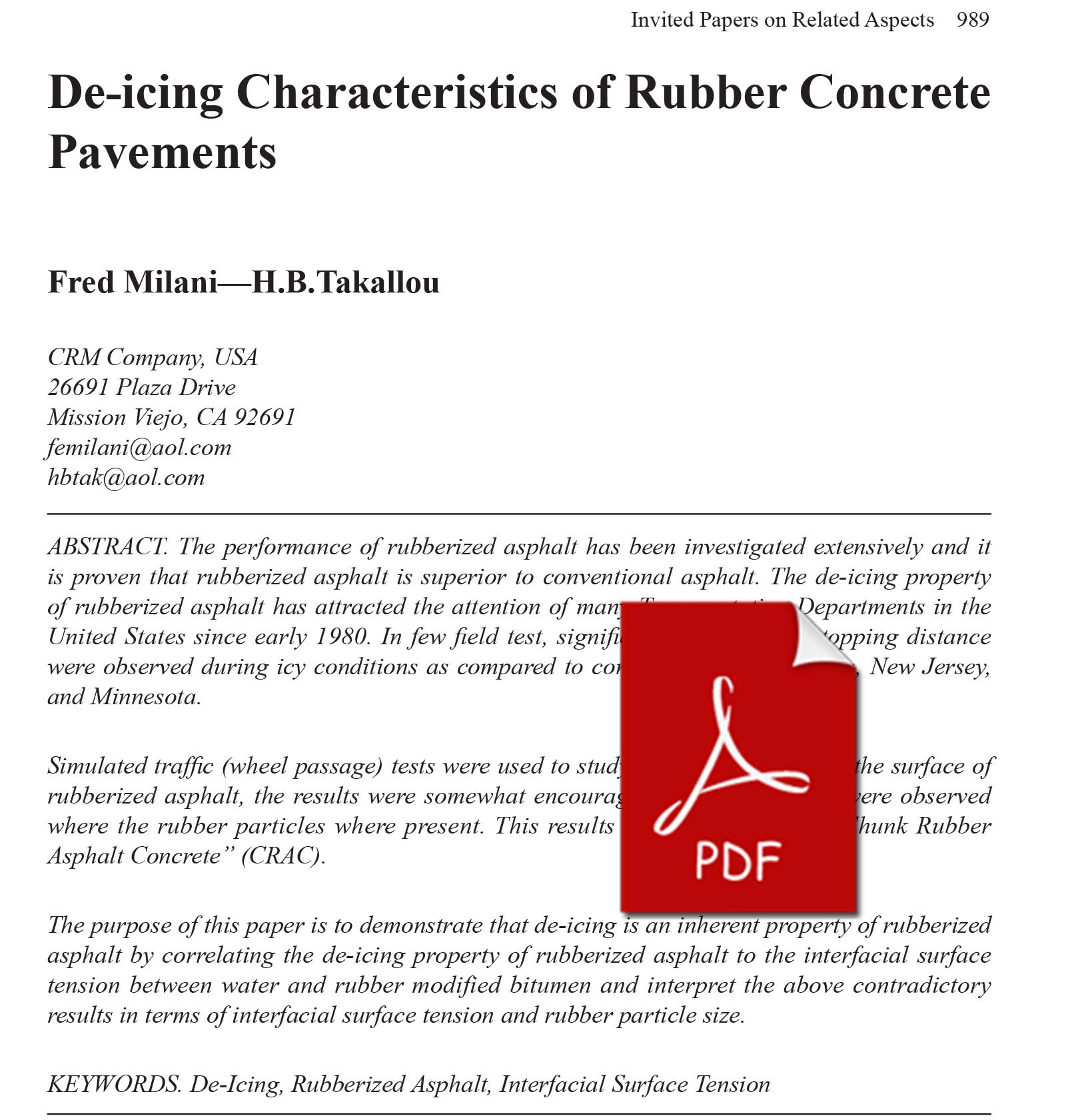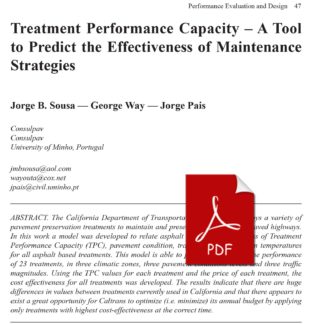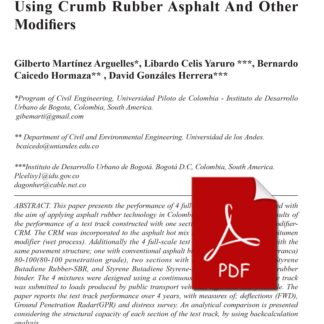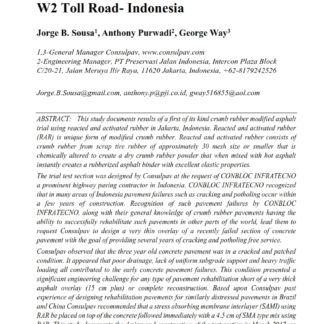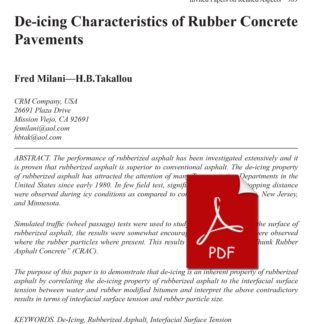Description
The performance of rubberized asphalt has been investigated extensively and it is proven that rubberized asphalt is superior to conventional asphalt. The de-icing property of rubberized asphalt has attracted the attention of many Transportation Departments in the United States since early 1980. In few field test, significant reduction on stopping distance were observed during icy conditions as compared to control sections in Alaska, New Jersey, and Minnesota.
Simulated traffic (wheel passage) tests were used to study ice dis-bonding from the surface of rubberized asphalt, the results were somewhat encouraging. Ice dis-bonding were observed where the rubber particles where present. This results lead to the idea of “Chunk Rubber Asphalt Concrete” (CRAC).
The purpose of this paper is to demonstrate that de-icing is an inherent property of rubberized asphalt by correlating the de-icing property of rubberized asphalt to the interfacial surface tension between water and rubber modified bitumen and interpret the above contradictory results in terms of interfacial surface tension and rubber particle size.

